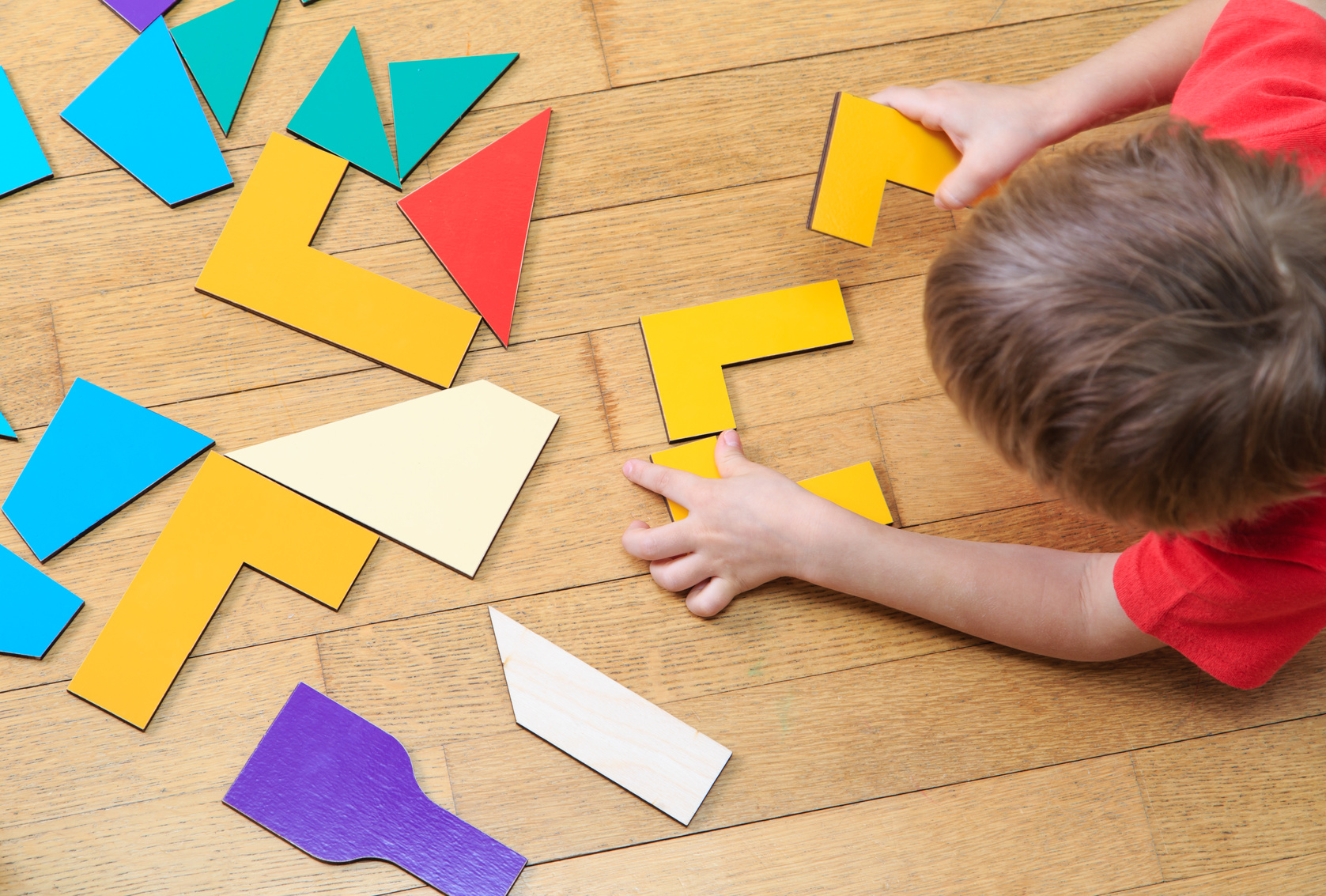A useful reference of geometric terms and their definitions.
Attributes and Spatial Properties
Qualities (usually used with geometry) of a figure, including sides, size, angles, etc.
 Angle: Two lines that meet to make a corner.
Angle: Two lines that meet to make a corner.- Congruent: Identical in size and shape.
- Dimensions/Size: Terminology to describe the dimensions of an object or set. With young children, the terms large, medium, small, taller, shorter, longer, less than and greater than are all appropriate.
- Edge: The meeting of two faces on a three-dimensional shape.
- Face: Surface planes of three-dimensional shapes.
- Flat: Having a plane-like quality.
- Equilateral: Sides that are the same length.
- Location terms: Words and phrases that describe the location of an object in relation to other objects, including words like on, under, on top of, next to, in front of, behind, beneath, underneath, inside, outside, at/on the bottom/top, between, and adjacent to (this is just a sample, there are many more).
- Parallel: Two lines in a two-dimensional space that do not meet (for example, the opposite sides of a square). A parallelogram has two sets of parallel lines.
- Plane: A flat two-dimensional surface upon which two-dimensional objects (e.g., circle, square) can lie, or the face of a three-dimensional object as it creates a surface (e.g., face of a cube); the dimensions of which are infinite.
- Point: A specific position on a line, plane, or in space.
- Pointy: An informal word to describe angles of objects.
- Side: Line segments in geometric figures that compose the exterior of the object.
- Straight: Without a curve.
- Vertex/Vertices: Also known as corner/corners. The point at which two sides of a two-dimensional figure or two edges of a three-dimensional figure meet.
- Wavy: Having curvy or undulating attributes (e.g., ocean, octopus tentacles).
Two-Dimensional Figures
- Circle: A two-dimensional shape in which all points on the curved line are equidistant from a center point.
- Triangle: A closed figure with three sides.
- Rectangle: A two-dimensional, closed, four-sided figure with four right angles.
- Rhombus: A closed four-sided figure with parallel opposite sides. A square is a special kind of rhombus. Sometimes called a diamond.
- Square: A special type of rectangle that has equilateral (same length) sides and parallel opposite sides.
- Pentagon: A closed figure with five sides.
- Hexagon: A closed figure with six sides.
- Septagon/Heptagon: A closed figure with seven sides.
- Octagon: A closed figure with eight sides.
Three-Dimensional Figures
- Cube: A three-dimensional figure with identical equilateral squares as faces (a cube is also a prism, see square prism below).
- Sphere: A round body whose surface is at all points equidistant from the center.
- Cone: A solid or hollow object that tapers from a circular or roughly circular base to a point.
- Pyramid: A three-dimensional figure on which the faces are triangular and converge to a single point at the top. Pyramids are named after the shape of their base (triangular pyramid, square pyramid, rectangular pyramid).
- Prism: A three-dimensional figure with identical ends. Named after the two-dimensional shape at the ends. For instance, a rectangular prism has identical rectangles at each end. A hexagonal prism has identical hexagons at each end: triangular prism, square prism (also called a cube), rectangular prism, pentagonal prism, hexagonal prism, heptagonal prism, octagonal prism.
Resource Type
